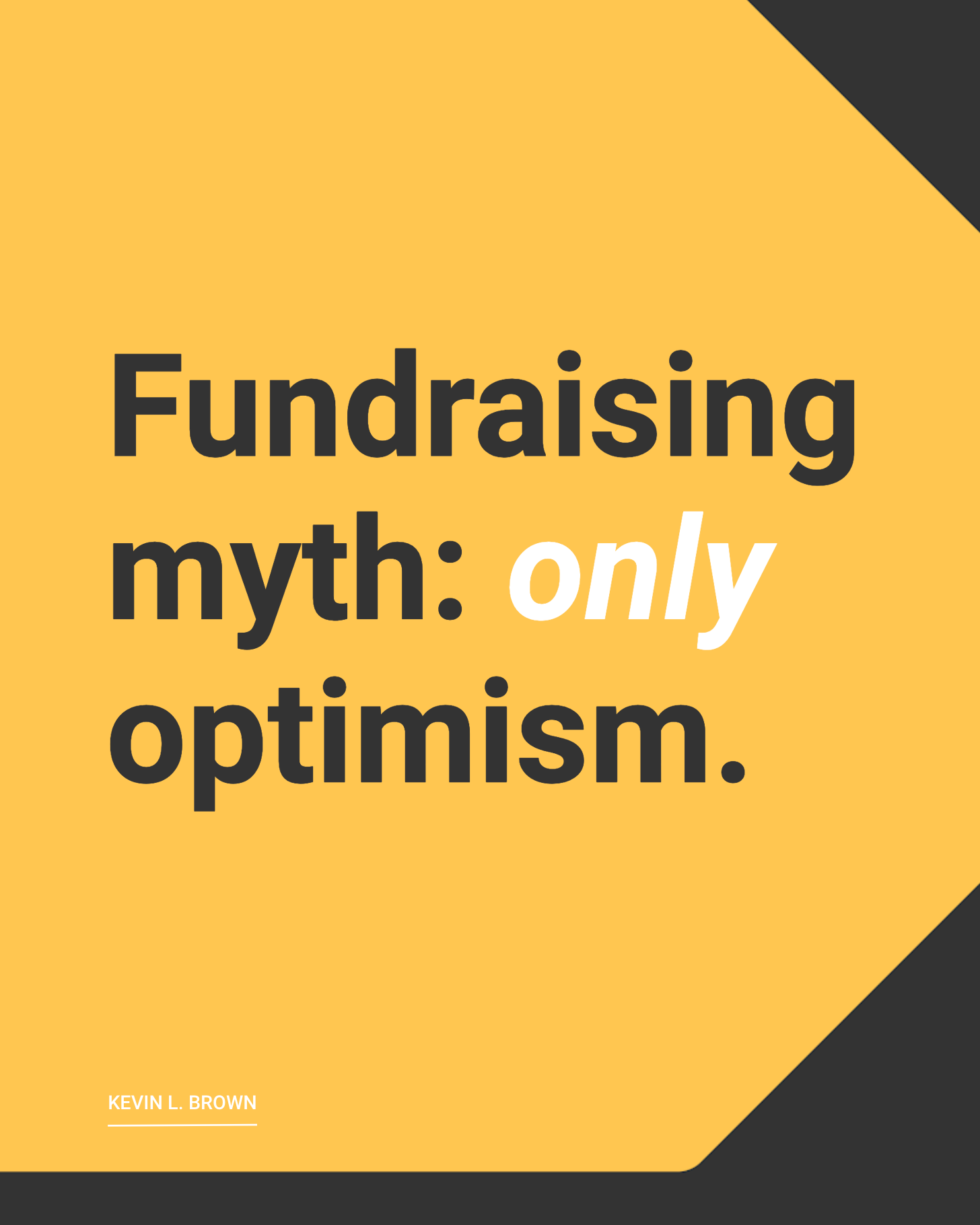Fundraising myth: only optimism.
A power move for your next fundraising pitch:
Tell the donor reasons your idea might not work.
Why?
This transparency tactic does five things.
Surprises them (in a good way), and great stories need suspense.
Shows humility and wisdom vs. some boastful leaders also pitching.
Indicates that your idea is big and impactful enough to potentially fail.
Makes them work to find objections, letting you share possible remedies.
Builds trust and shifts the pitch into a two-way collaboration on solutions.
Here’s the frustrating reality. ⤵
None of us have figured out how to solve poverty and injustice. Not global aid agencies. Not foundations with billions in endowment. Not the largest NGOs.
(Because most SDGs are going in reverse.)
So, if you’re dreaming big enough, what are the chances your early- or growth-stage organization has a fail-proof solution?
Of course, donors want to see nonprofit leaders who are passionate about their ideas and committed to their execution.
But too much optimism can be a problem.
“Going into an investor meeting with only the rainbows and puppies of your business means that you are setting yourself up for failure,” says Adam Grant in the best-selling book Originals.
He continues on the Acumen Academy blog.
“Acknowledge in your pitch that your idea is imperfect. Your investors might actually be convincing themselves that the problems you outlined are not so big.”
Then wrap up your audacious pitch like this:
“I see more strengths than challenges here and I’m all in to address them. What are your thoughts?”
That way the collaboration conversation begins…
This move takes fundraising courage.
But so does your everyday work.
So give it a try.
Reveal risks.
Raise the trust.
Reap the rewards.
💪🏽💛
The daily bonus
A recent article in the Stanford Social Innovation Review brewed up a storm:
Where Strategic Philanthropy Went Wrong
Dramatic advances in the scale and sophistication of strategic philanthropy have not improved societal conditions at a national level. We propose empowerment philanthropy as a new approach to fostering political and economic self-determination by supporting people in finding their own solutions and ensuring an effective multiracial democracy.
First some pushback in the comments and on social media.
Now, a formal rebuke:
Strategic Philanthropy Is Alive and Well
A recent critical portrait of strategic philanthropy is unrecognizable to those of us who practice it.
What are your thoughts?
Let me know in the comments.
Sneak peek
Coming up in Monday’s newsletter:
A strategy strength isn’t length.




